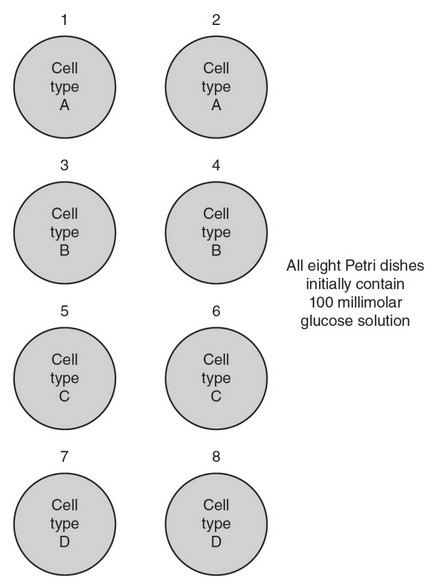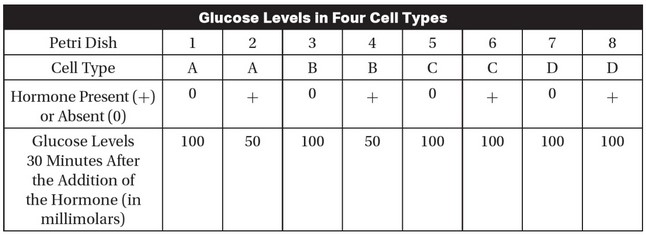Question
An experiment is performed to measure how different cell types
respond to a hormone that causes cells to absorb glucose from their
environment. Four different cell types (A, B, C, and D) are used. At
the start of this experiment, there are eight Petri dishes, each of which
contains 100 millimolar glucose solution. Two dishes each contain cell
type A, two dishes contain cell type B, two dishes contain cell type C,
and the final two dishes contain cell type D, as illustrated in the
following figure.
The hormone is added to four of the Petri dishes, one of each cell type.
Glucose levels are measured in all eight Petri dishes 30 minutes after
the addition of the hormone, and those glucose levels are listed in the
following table.
(a) Describe the most likely reason why cell types C and D did not
respond to the presence of the hormone.
(b) Identify the function of Petri dishes 1, 3, 5, and 7 in the
experimental procedure.
(c) A molecule is added to Petri dish 4 before the hormone is added.
This molecule irreversibly binds to this hormone, preventing the
hormone from binding to any receptor. The hormone is then added
to Petri dish 4. Predict the effect this molecule will have on the
glucose concentration in Petri dish 4 at 30 minutes after the
addition of the hormone.
(d) Justify your prediction from part (c).
▶️Answer/Explanation
Ans:
(a) Describe the most likely reason why cell types C and D did not
respond to the presence of the hormone.
(b) Identify the function of Petri dishes 1, 3, 5, and 7 in the
experimental procedure.
(c) A molecule is added to Petri dish 4 before the hormone is added.
This molecule irreversibly binds to this hormone, preventing the
hormone from binding to any receptor. The hormone is then added
to Petri dish 4. Predict the effect this molecule will have on the
glucose concentration in Petri dish 4 at 30 minutes after the
addition of the hormone.
(d) Justify your prediction from part (c).
